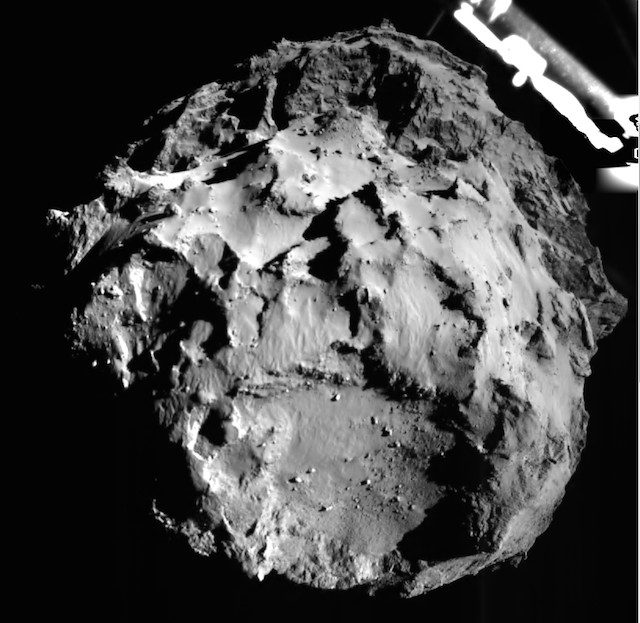SUMMARY
This is AI generated summarization, which may have errors. For context, always refer to the full article.

DARMSTADT, Germany (UPDATED) – European scientists were hoping for a stream of data Thursday, November 13, after a robot lab made the first-ever landing on a comet, a key step in a marathon mission to probe the mysteries of space.
Operation chiefs in Darmstadt, Germany, on Wednesday, November 12, said the lander Philae failed to anchor to comet 67P/Churyumov-Gerasimenko on landing, but still managed to send back scientific information.
The 100-kilogram (220-pound) explorer may have plopped down in a soft, sand-like material or may be lightly touching the surface, they speculated.
More would be known on Thursday when Philae makes scheduled contact with its mothership, Rosetta, landing manager Stephan Ulamec said.
“Hopefully, we are sitting there on the surface at a position different to the original landing and can continue our science,” Ulamec said.
The agency was to brief the press at 1300 GMT (9 pm in Manila).
The European Space Agency (ESA) is ecstatic at the operation and NASA – the world’s most successful space agency and an expert at difficult landings – itself heaped praise on the exploit.
Equipped with 10 instruments, Philae was designed to carry out the first-ever scientific experiments on a comet, providing the jewel in a crown of a massively complicated project more than two decades in the making.
Getting from Earth to a comet that is traveling towards the Sun at 18 kilometers per second (11 miles per second) was a landmark in space engineering and celestial mathematics.
The 1.3-billion-euro ($1.6-billion) Rosetta mission was approved in 1993.
Rosetta, carrying Philae, was hoisted into space in 2004, and took more than a decade to reach its target in August this year, having used the gravitational pull of Earth and Mars as slingshots to build up speed.
The pair covered 6.5 billion kilometers together before Wednesday’s separation prior to landing.
Seen by the superstitious as harbingers of good or evil, comets are viewed by astrophysicists as time capsules of the nascent Solar System.
They comprise ancient ice and dust, the rubble of the material that went into the making of the planets 4.6 billion years ago.
According to one hypothesis, they may have given Earth the gift of life by pounding it with ice that made the oceans and carbon molecules that provided the building blocks of organisms.
Philae was designed to come into land at a gentle 3.5 kilometers per hour, then fire two harpoons into a surface that engineers hoped would provide sufficient grip while the robot conducts its experiments.
However there were indications that these landing harpoons had failed to deploy, ground control said.
Envisaged tests include drilling through the comet surface and analyzing the samples for chemical signatures.
Science goals
In Toulouse, France, astrophysicist Philippe Gaudon, who heads the Rosetta mission at French space agency CNES, said it would be difficult for Philae to drill if it was not secured.
“However, Philae has not tipped over and seems to be stabilizing,” Gaudon said.
“And a certain number of instruments are continuing to operate, mainly for measuring temperature, vibration, magnetism and so on.”
Philae is designed to operate for about 60 hours on a stored battery charge, but several months more if it can get replenishment from sunlight.
The lander complements 11 instruments aboard Rosetta, a three-ton orbiter that is doing four-fifths of the expected scientific program from orbit.
Whatever happens to Philae, Rosetta will continue to escort the comet as it loops around the Sun.
On August 13, 2015, “67P” will come within 186 million kilometers of the star.
The mission is scheduled to end in December 2015, when the comet heads out of the inner Solar System.
At this point, Rosetta will once again come close to Earth’s orbit, more than 4,000 days after launch. – Rappler.com
Add a comment
How does this make you feel?
There are no comments yet. Add your comment to start the conversation.